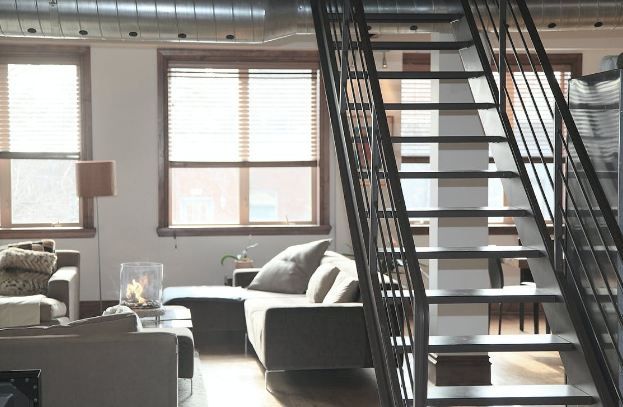Working at home has many advantages. Even though you may miss your old cubicle and your ultra-plush office chair, you will otherwise love the idea of working in the comfort of your own home.
However, the problem is that you don’t have an entire room dedicated to setting up a home office. But look around inside your home for any unused little space. How about that empty nook below the staircase? It remains the most ignored part of any home. But it has the potential to become a home office that you can call your own if you know how to maximize every bit of its space. Here are some smart under-the-staircase home office ideas that you should consider.
1. Bring your attention to the walls
When you don’t require too much space for work and don’t wish to clog the area, it’s best to choose a basic desk or table to place under the stairs. But since the design doesn’t focus on the use of high-priced furniture, your attention should be on the walls instead.
This can be done by applying a striking finish on the walls and adding a few fresh paint coats on the side walls. Or if you don’t want to bother with the paint drips, choose easy-to-apply wallpapers, such as this self-adhesive wallpaper from Abyssaly that comes with a beautiful faux weathered wood design.
2. Purchase the best desk (or build your own)
You might require some storage space, so look for desks that have built-in storage such as drawers, open shelves, or file cabinets. This writing desk from Ameriwood Home is a good option, especially if you are working on your laptop. For some luxurious touch, it has gold legs and two drawers that come with gold ring handles. And it’s not just an ordinary desk – it also comes with a wireless charging port.
Or if you’re working on a desktop computer, this small workstation from Mayline Group will fit even the tiniest possible under-the-staircase nook. It is a mobile desk with four casters (including two lockable ones), a slide-out keyboard tray, and a compartment for your desktop computer’s system unit.
Because of the space constraints, you will likely want to have a customized built-in floating desk. You have to measure the floor up the back wall, and then the width of the space. It’s to determine how wide and deep you want your desk to be. It’s best to purchase one- to three-inch-thick boards and cut them into appropriate sizes. Your desk also needs brackets to support it and make it more stable, such as these four-piece 14” brackets from King Do Way. If you don’t have the building skills, you can also have the desk done by a professional builder.
3. Make your workstation more versatile and personalized
Having limited space doesn’t mean that your under-the-stairs home office cannot be versatile. Some exceptional workstations are versatile and smart enough for every type of space. Such workstations come with a desk, a few open shelves, and other storage spaces such as drawers and cabinets. To make your small home office more versatile, purchase a mobile cabinet, and this black moveable cabinet from Lorell has the perfect height and width to store all of your most active files and other miscellaneous office items.
While there are several “ready-to-use” products in the market, it’s better to have your workstation customized considering the space you have. Since we are talking about the entire unit here, it’s good to look for designs that already come with a finish and incorporate a theme without additional details.
It’s also a good idea to add a corkboard on your wall to pin your important notes and reminders, and display your photos from that unforgettable trip to Paris. Pinning your own photos or small artwork adds a more personal touch to your workspace. This framed gray corkboard from DesignOvation should be the perfect wall organizer to your under-the-stairs workspace.
Some under-the-stairs nooks are wide and open enough to accommodate a wall cabinet and open storage. Take advantage of the space by putting a longer desk and installing lights below the wall cabinetry to illuminate it.
4. Create suitable lighting
Most staircase nooks are known to be dingy, so having good lighting is imperative. However, a mere desk lamp won’t be sufficient to illuminate the entire nook. It’s better to install built-in lighting. This smart LED recessed downlight from iLintek can be even controlled by voice commands since it is compatible with Amazon’s Alexa and Google Assistant.
If possible, build a staircase without risers or just remove them from the existing staircase. It will allow natural light during the daytime and make your workstation a lot more open and airy. It also makes the staircase more lightweight.
Some under-the-stairs nooks already come with a small window. It’s a very simple way to bring enough light to your office nook. Plus, it allows you to enjoy the views outside.
